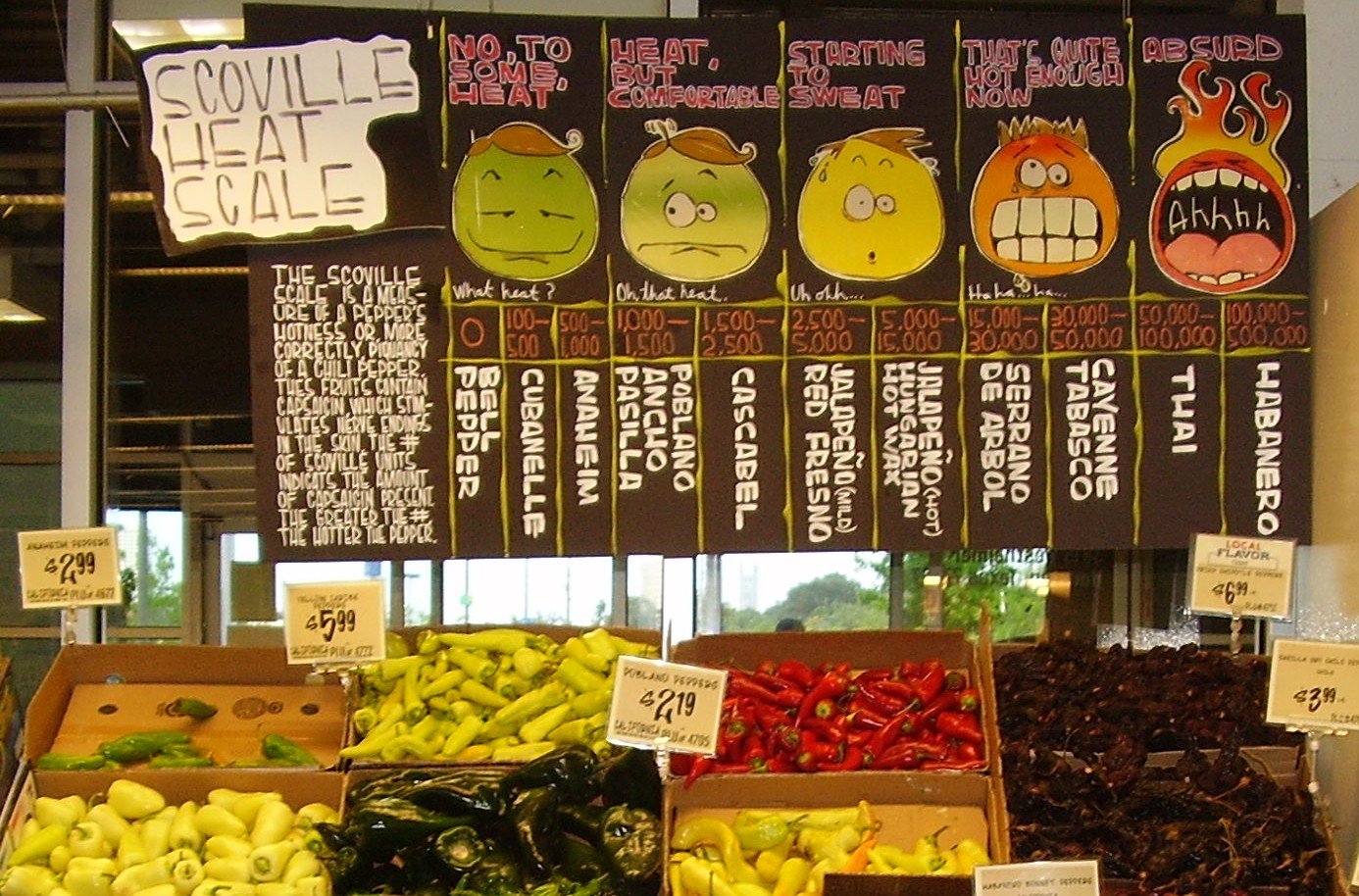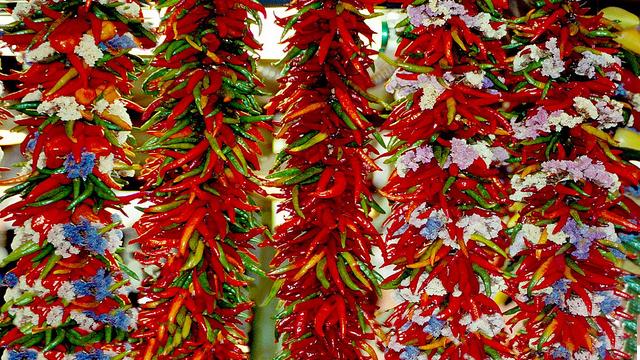The hottest chilli ever measured rates a whopping 1,569,300 Scoville Heat Units, but what exactly does that mean? Where does the Scoville Scale come from? What exactly does it measure? And how do we end up with such a precise number to describe the heat sensation a pepper can produce?
First, it’s necessary to make the acquaintance of Wilbur Scoville, the turn-of-the-century pharmacist who inadvertently set these wheels of spicy terror in motion. The year was 1912, and Scoville was on the hunt for a heat-producing ointment. Initially, his namesake scale was based on actual taste buds, reports Smithsonian Magazine:
The idea was to dilute an alcohol-based extract made with the given pepper until it no longer tasted hot to a group of taste testers. The degree of dilution translates to the SHU. In other words, according to the Scoville scale, you would need as many as 5,000 cups of water to dilute 1 cup of tobacco sauce enough to no longer taste the heat.
These days … fortunately … there are other testing methods than human tongues. According to the AP, scientists are now able to separate the capsaicinoids (the chemical compounds that make peppers spicy-hot) from the peppers themselves, “and use liquid chromatography to detect the exact amount of the compounds. A formula then converts the readings into Scoville’s old scale.”
Once scientists determine the concentration of heat-producing chemicals in a pepper, they employ a formula that weights each chemical according to its ability to create the sensation of heat. The result is a number measured in American Spice Trade Association (ASTA) pungency units, and you can multiply the ASTA pungency units by 15 in order to get the Scoville units. So while the method may have changed, we can still use the Scoville scale to report the heat of a particular pepper.

Red peppers have been domesticated for 7,000 years, but the race for surface-of-the-sun supremacy is a newer pursuit … as is the sport-like interest in consuming them (the amount of hot peppers eaten by Americans has increased eight per cent in less than five years, according to the Department of Agriculture). The novelty is only enhanced by the practice of naming the Scoville scale-topping specimens with the scariest names possible; prior to the Carolina Reaper, the Trinidad Moruga Scorpion (so hot “you might be better off eating an actual scorpion“) held the title. (See also: this classic Simpsons reference.)
Only slightly less potent is the Bhut Jolokia, also known as the Naga King, also known as the “ghost pepper.” In a colourful story chronicling her visit to India’s Nagaland to experience the legendary Naga King Chilli-Eating Competition, Mary Roach witnessed two pepper-samplers react very differently to their fiery encounters. She writes:
Food science has a theory called “dynamic contrast.” It holds that the human tongue likes variety and surprise. It likes a little salt with its sweet, a little crunchy with its creamy. Though technically an irritant, chilli adds spice, literally and otherwise. Psychologists have other ideas on the topic. Some have explained the chilli pepper’s popularity by way of the “risk-taking personality”: superhots as the edible version of sky diving.
In the AP story on Currie’s world-record Scoville triumph, the man who named his company PuckerButt and sells a bottled sauce called “I Dare You Stupit” has a simple explanation for the craze: “People want to be able to say they ate the world’s hottest pepper.”
As of November 2013, the world’s hottest chilli is “Smokin’ Ed’s Carolina Reaper.” The winning batch registered a mouth-melting 1,569,300 Scoville Heat Units, which are used to determine a pepper’s pungency, or spicy heat. (To compare: Jalapeños register an average of 5,000 SHU.)
The highest-rated single Carolina Reaper, which was cultivated by South Carolina’s evocatively-named PuckerButt Pepper Company, clocked in at 2.2 million SHUs … slightly above pepper spray’s 2 million. The bottle for the company’s signature sauce is labelled with an ominous drawing of a hooded figure holding a scythe. The implication is clear: Smokin’ Ed, who actually seems like a nice guy (real name: Ed Currie), might be trying to murder your taste buds with his record-breaking pepper, or at least bring food dares to a whole new level of pain. (Video evidence below.)
Top photo by Donna Sutton. Middle photo by Lisa Stewart.

Comments
4 responses to “How Does The Scoville Scale Measure The Exact Hotness Of Chillies?”
I used to love spicy food, still do but can’t always handle it. Blairs Ultra Death Sauce is great
Been eating Ultra Death sauce lately. I find Bunsters “Sh¡t the Bed” sauce has a lot more flavour though. Made with real scorpion chilli’s instead of extract.
“sh!t the bed” – best name. ha ha ha.
http://thechillifactory.com/
Lots of carolina reaper, trinidad scorpion, bhut jolokia and other superhot chilli products from http://www.wildfirechilli.com.au/ in WA…highly recommended 🙂
Carolina Reapers are PAIN. I love spicy food, most chillis ive tried have been no problem. Then i ate a reaper and my stomach was very very very unhappy with me for 3 days.
The normal solution of ice cream/ milk did absolutely nothing.